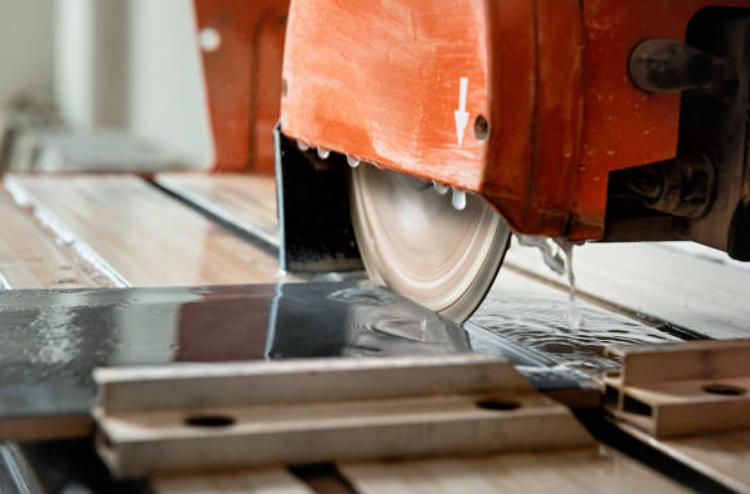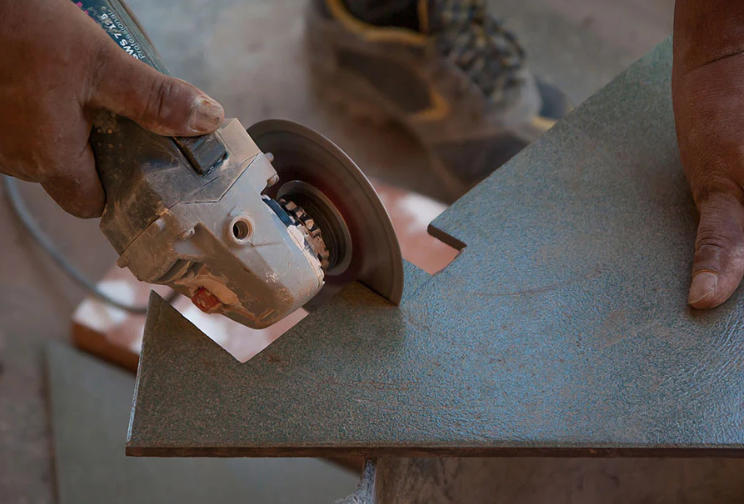Views: 0 Author: Site Editor Publish Time: 2025-10-20 Origin: Site








When it comes to tile cutting, choosing the right blade and cutting method can make all the difference in the final result. Diamond tile cutting blades are available in two main types — wet cutting and dry cutting — each designed for specific tile materials and job environments.
Although both use diamond-tipped segments to slice through hard tiles like ceramic, porcelain, marble, and stone, they perform very differently. Using the wrong blade for your application can cause chipping, overheating, poor accuracy, or even equipment damage.
In this guide, SENMINE — a professional diamond blade manufacturer — explains the differences between wet and dry tile cutting and offers expert advice to help you choose the right blade for your project.

For larger tile installations or dense materials such as porcelain, marble, or stone tiles, wet cutting delivers superior results. This method uses a continuous flow of water to cool the diamond blade, reduce friction, and wash away tile dust. The water prevents overheating and minimizes chipping, producing smooth, professional-grade cuts every time.
Wet tile saws are commonly used for this technique. These machines are typically table-mounted and equipped with a water reservoir or hose system that keeps the blade cool during operation. Because of the cooling effect, wet cutting is ideal for long, continuous cuts — such as splitting large-format tiles or making precise straight lines across ceramic or porcelain surfaces.
Pro Tip: Always ensure a steady stream of water flows over the blade. Without proper cooling, the blade may warp, overheat, or lose its diamond segments. As experts often say: The water cools down the tool more effectively, so there is also a smaller risk of overheating-related hazards.
Wet cutting also significantly reduces tile dust, making it healthier and cleaner for the work environment — an advantage that professional tile installers and contractors especially value.

Dry cutting is widely used for small-scale tile jobs, particularly when working indoors or in locations where water use is inconvenient. Dry diamond blades have laser-welded segmented rims, which help release heat and dust during operation. The air between segments keeps the blade cool enough for short, intermittent cuts — eliminating the need for water.
This cutting style is perfect for detail trimming, edge finishing, decorative patterns, or custom shaping of ceramic and porcelain tiles. It's typically done with handheld saws or angle grinders, which are easy to maneuver but generate more dust and heat.
Pro Tip: When dry cutting tiles, make shallow passes (up to 30 seconds) and pause for 5–10 seconds between cuts to let the blade cool. Avoid forcing the blade through thick tiles, and always wear proper PPE (eye protection, gloves, and a dust mask). With the right care, you can still achieve clean and precise results while preserving the lifespan of your diamond blade.

The choice between wet and dry tile cutting depends on your project scale, tile material, and workspace.
| Factor | Wet Cutting | Dry Cutting |
|---|---|---|
| Best for | Porcelain, marble, stone tiles | Ceramic or thin porcelain tiles |
| Cut quality | Smooth, chip-free finish | Slightly rougher edge |
| Dust control | Excellent (minimal dust) | Produces more dust |
| Cutting duration | Continuous, longer cuts | Short, intermittent cuts |
| Equipment type | Tile saw with water feed | Handheld grinder or dry cutter |
| Safety | Lower risk of overheating | Requires frequent cooling breaks |
If you're cutting thick, hard, or polished tiles, wet cutting provides the best precision and finish. For quick indoor fixes or pattern cutting, dry cutting is more convenient and portable. However, both methods require proper safety precautions and the use of high-quality diamond blades for consistent results.

When you need accurate, chip-free tile cuts, SENMINE has you covered. As a leading diamond blade supplier in China, we design and produce wet and dry diamond tile blades optimized for ceramic, porcelain, marble, and stone applications.
Our blades are engineered with advanced bonding technology, heat-resistant materials, and balanced segment design to deliver long-lasting performance. From fine decorative cutting to large-scale tile installation, SENMINE ensures precision, speed, and safety in every cut.
All SENMINE tools undergo strict quality control and are available for OEM customization. Whether you're a contractor, tile installer, or distributor, we provide reliable products and expert support to help you complete your projects with professional results.
